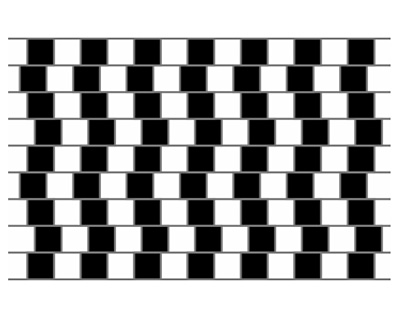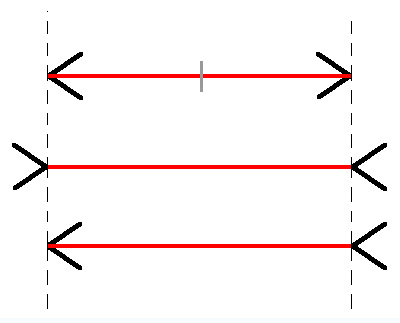Distorting Illusions
Distorting illusions are characterized by distortions of size, length, or curvature. A striking example of this type of optical illusion is the "Café Wall" illusion, which was first described by Doctor Richard Gregory. He observed this curious effect in the tiles of the wall of a café at the bottom of St Michael's Hill, Bristol. This optical illusion makes the parallel straight horizontal lines appear to be bent.

Another example is the famous Mueller-Lyer illusion. This is an optical illusion consisting of nothing more than an arrow. When viewers are asked to place a mark on the figure at the mid-point, they invariably place it more towards the "tail" end. Another variation consists of two arrow-like figures, one with both ends pointing in, and the other with both ends pointing out. When asked to judge the lengths of the two lines, which are equal, viewers will typically claim that the inward pointing pair is longer. One possible explanation is that one sees the lines as three-dimensional, such as the outgoing and ingoing corners of a room. Another possible explanation is that the line with arrows pointing inwards may simply appear longer because the arrows themselves extend past the line.
